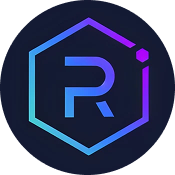When evaluating blockchain platforms for scalability, security, and real-world applicability, Zilliqa and Algorand stand out as innovative solutions tailored for different needs and visions. Zilliqa pioneered sharding technology, offering linear scalability tailored for high-throughput decentralized applications, while Algorand emphasizes energy efficiency and instant finality through its Pure Proof-of-Stake consensus, making it a strong candidate for enterprise adoption. As both networks evolve, their distinctive architectures and use cases highlight the diverse pathways blockchain technology is taking to meet the demands of a rapidly digitizing world. This comparison explores their core features, technological advancements, and ideal use cases, providing clarity for enthusiasts and investors alike.
Short on time? Jump to Zilliqa vs Algorand Comparison
Understanding Zilliqa and Algorand ?
Zilliqa was launched in 2017 as the world’s first sharded blockchain, addressing the critical scalability issue faced by earlier blockchain networks. Its innovative sharding approach allows the network to grow linearly as more nodes join, providing high throughput suitable for complex decentralized applications. Zilliqa employs a unique smart contract language called Scilla, designed for formal verification and security, making it appealing for developers prioritizing safety in smart contract execution.
Algorand, founded in 2019 by cryptography pioneer Silvio Micali, takes a different approach with its Pure Proof-of-Stake consensus mechanism. It emphasizes security, scalability, and decentralization without sacrificing energy efficiency. Algorand’s architecture features a single-layer blockchain that supports instant finality and high transaction throughput, making it attractive for enterprise use cases, digital asset issuance, and decentralized finance.
Both platforms are actively evolving; Zilliqa is integrating Ethereum Virtual Machine (EVM) compatibility to support Solidity-based applications, while Algorand is expanding its ecosystem with enhancements in protocol incentives and advanced smart contract capabilities. These developments reflect their commitment to meeting the expanding demands of blockchain developers and users.
Despite their differences, both networks aim to solve real-world scalability challenges—Zilliqa through sharding and high throughput, and Algorand through energy-efficient, instant finality consensus—demonstrating the diversity of blockchain innovation in addressing specific industry needs.
Key Differences Between Zilliqa and Algorand
Consensus Mechanism
- Zilliqa: Zilliqa employs a Practical Byzantine Fault Tolerance (pBFT) consensus algorithm combined with sharding to achieve scalability and security. Its consensus process involves committees that validate transactions within each shard, ensuring rapid finality and resilience against malicious actors. This hybrid approach allows Zilliqa to process thousands of transactions per second while maintaining decentralization and security.
- Algorand: Algorand utilizes a Pure Proof-of-Stake (PPoS) consensus mechanism, where a cryptographic sortition process randomly selects validators based on their stake. This approach ensures democratic participation, quick block finality, and energy efficiency. Algorand’s protocol is designed to prevent forking and promote security without requiring energy-intensive mining, making it suitable for large-scale enterprise applications.
Scalability and Throughput
- Zilliqa: Zilliqa’s pioneering sharding technology allows it to scale linearly with network growth, supporting over 2,800 transactions per second experimentally. Its architecture enables multiple shards to process transactions simultaneously, significantly increasing throughput as more nodes join the network. This makes Zilliqa highly suitable for high-demand decentralized applications, including gaming and financial services.
- Algorand: Algorand boasts a high throughput capacity with a record of over 5,700 transactions per second and near-instant finality. Its single-layer architecture simplifies scalability, and recent protocol updates aim to enhance this further. The network’s ability to process transactions quickly and securely makes it ideal for real-world use cases like payments, asset tokenization, and enterprise solutions.
Smart Contract Platform
- Zilliqa: Zilliqa uses Scilla, a safe-by-design smart contract language that emphasizes formal verification, reducing vulnerabilities common in other platforms. Its smart contracts are designed to be more secure and auditable, although the language has a steeper learning curve for developers. The upcoming EVM compatibility will broaden its developer base by enabling Solidity-based smart contracts.
- Algorand: Algorand’s AVM (Algorand Virtual Machine) supports smart contract development primarily in Python, with ongoing support for other languages. Its smart contracts are designed for simplicity, security, and speed, enabling developers to deploy decentralized applications efficiently. Algorand’s focus on usability and developer-friendly tools accelerates adoption for enterprise and DeFi projects.
Energy Efficiency
- Zilliqa: While Zilliqa’s consensus involves multiple nodes and shards, its energy consumption is moderate compared to proof-of-work networks, thanks to its pBFT-based consensus. It balances security and scalability without excessive energy use, aligning with growing sustainability concerns.
- Algorand: Algorand’s PPoS protocol is inherently energy-efficient, requiring minimal hardware resources. Its cryptographic sortition process ensures security without the energy-intensive mining processes seen in traditional proof-of-work networks. This makes Algorand highly suitable for environmentally conscious applications and large-scale institutional adoption.
Development and Ecosystem
- Zilliqa: Zilliqa’s ecosystem is growing with increased support for dApps, DeFi, and enterprise integrations, especially following its Ethereum compatibility upgrade. Its focus on formal verification and security appeals to developers needing reliability in financial and enterprise applications.
- Algorand: Algorand has seen rapid ecosystem expansion, driven by robust developer tools, strategic partnerships, and a focus on real-world use cases. Its ecosystem includes asset issuance, DeFi protocols, and government collaborations, supported by incentives and community programs to foster innovation.
Zilliqa vs Algorand Comparison
| Feature | ✅ Zilliqa | ✅ Algorand |
|---|---|---|
| Consensus Mechanism | pBFT + sharding for scalability and security | Pure Proof-of-Stake with cryptographic sortition |
| Transaction Throughput | Over 2,800 TPS (experimental) | Up to 5,700 TPS (record) |
| Finality Time | Single block finality | Instant finality |
| Smart Contract Language | Scilla, formally verified | AVM with Python support |
| Energy Efficiency | Moderate, due to pBFT | Highly energy-efficient via PPoS |
| Ecosystem Focus | High-throughput dApps, formal security | Enterprise, DeFi, real-world use cases |
Ideal For
Choose Zilliqa: Developers and enterprises seeking scalable, secure, and formal verification-ready blockchain solutions, especially for high-demand dApps.
Choose Algorand: Organizations and developers prioritizing energy efficiency, instant finality, and broad ecosystem support for enterprise and financial applications.
Conclusion: Zilliqa vs Algorand
Zilliqa and Algorand exemplify two distinct yet complementary approaches to scaling blockchain technology. Zilliqa’s sharding architecture offers impressive throughput potential and security features tailored for demanding decentralized applications, while Algorand’s energy-efficient, instant finality protocol provides an ideal foundation for enterprise-grade solutions and sustainable blockchain adoption.
Choosing between the two depends heavily on project requirements. Developers needing formal verification and high throughput might favor Zilliqa’s robust platform, especially once EVM compatibility is fully integrated. Conversely, those prioritizing quick settlement, low energy consumption, and broad ecosystem support may find Algorand’s streamlined protocol more aligned with their goals. Both networks are actively innovating, promising exciting developments that will shape blockchain’s future landscape.






